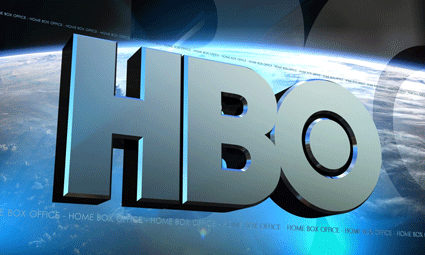Historically, most big TV mergers and acquisitions have been disasters, so is there any hope for AT&T’s purchase of Time Warner — not to mention Disney and Fox? The Center’s director explores the potential for failure or success.
______________________________
By Jeffrey Cole
When a Federal court overruled the Trump Justice Department and allowed ATT’s takeover of Time Warner (as discussed in a previous column), it opened the floodgates to many more media acquisitions and mergers. Comcast quickly renewed their offer to acquire Rupert Murdoch’s film and television assets, but Fox preferred to become part of Disney.
 Now that it is clear there will be very few, if any, anti-trust impediments to big deals, many more are being contemplated.
Now that it is clear there will be very few, if any, anti-trust impediments to big deals, many more are being contemplated.
In other words, quite a few media producers and distributors are going to find themselves working for new owners.
Sour deals of the past
I used to teach a course on the business of entertainment at UCLA’s Anderson Graduate School of Management. Part of the course was media mergers and purchases over the years. Sadly, the record of success after the merger is rarely encouraging.
The “mother” of all bad deals was AOL buying Time Warner in 2000. (So far, this has been a bad century for Time Warner. They had finally gotten past it when Rupert Murdoch unsuccessfully tried to acquire the company and then when AT&T successfully did). It was a bad deal from the beginning: any outsider could see it made no sense for AOL to acquire Time Warner. It should have been the other way around.
When I ask my friends running studios which deals they point to as successful, few come to mind. All of the major acquisitions by the Tisch family, Westinghouse, Viacom, Matsushita, Seagram, Vivendi, Sony, and Coca-Coca have run from disastrous to mildly successful. Had any one of these companies been able to look ahead and see the landscape five years after buying, I suspect they would not have made the deals.
_________________________________________________________________________________________________
HBO was the first cable channel to increase its distribution by announcing in 2014 that it was going over the top with HBO Now. Subscribers could cut the cord and still get HBO for $15 a month. I applauded the move but strongly criticized them for charging the same $15 they were charging when they split the subscription fee with cable companies. They could have charged $11 or 12, made more money for themselves, and saved subscribers three or four dollars a month, but they were afraid to offend the cable companies who threatened retaliation.
_________________________________________________________________________________________________
There are a few exceptions. Many point to Comcast’s acquisition of NBC Universal as a good move. Almost everybody sees Cap Cities’ acquisition of ABC as a smart move, as well as Disney’s purchases of Pixar, Marvel, and Lucasfilm.
How will this new deal turn out?
At Warner Bros, HBO, Turner Broadcasting, Fox Film and Television, and also at prospective new targets, the overriding questions are: what does this mean? How well do they understand the company they just acquired? Are they really interested in our business? Will they leave us alone to run this valuable asset they just paid billions of dollars for? Will our unique culture and way of doing business survive the process?
Already the signs are not encouraging.
Time Warner, as built by the legendary Steve Ross in the 1980s, is an amazing company. Warner Bros. has been the most consistently successful film and television studio over the past 35 years. HBO was the first hugely successful movie service that moved into original content, and it was also the first cable channel to go over the top (OTT). Turner was a pioneer in sports and syndicated programming as well as news with CNN.
At its peak, Time Warner owned the hugely influential (at the time) Time, Inc., publisher of Time, People, and many other titles, as well as Time Warner Cable, one of the two biggest cable companies in the country. Time Warner’s publishing and cable divisions have been gone for a while, but the three remaining divisions are all industry leaders. It is still an extraordinary array of assets.
With one court ruling, all those assets were placed in AT&T under the Warner Media label to be led by longtime AT&T executive John Stankey. Among other assets, Stankey has been running DirecTV since AT&T’s $50 billion purchase in 2015. Clearly, he has experience in dealing with the anxiety of veteran employees as they are absorbed into the larger corporate mix.
The Time Warner team’s outright fear and frayed nerves were especially exposed — having gone through a devastating short-term marriage with AOL and a possible hook-up with Rupert Murdoch.
It fell to Stankey to reassure Warner, HBO, and Turner that they were acquired because they were extraordinary legacy assets: the new owner both valued their importance and also wanted to invest in them.
The first of the new owner’s meetings that got widespread attention was Stankey’s meeting with the HBO team. While some have reported that the press coverage was overly negative and that Stankey committed to AT&T investing in HBO, others say he told them they needed to be more like Netflix. No matter which version is correct, it seems Stankey missed a once-in-an-acquisition opportunity to rally the troops and reassure them life would be better under AT&T. Instead, while not threatening layoffs, he told them the next year would not be a pleasant one.
Why HBO matters
HBO is a very special asset. In 1975, it was the first channel to deliver content to one-third of the earth’s surface (including the U.S.) via satellite and without stations or affiliates. The Time, Inc. executive who engineered the satellite move was Gerald Levin, who capitalized on HBO’s first-mover status with satellite distribution to become COO and eventually CEO of Time Warner. His reputation of being the smartest guy in the room and betting the company on technology would haunt him 25 years later when he made the same bet, this time on AOL.
_________________________________________________________________________________________________
HBO needs to continue to create great programming. This year Netflix is spending $8 billion on original programming compared to HBO’s $2.5 billion. While Netflix produces more, I would argue that HBO’s percentage of quality programming surpasses Netflix. HBO, in other words, does more with $2.5 billion than Netflix does with $8 billion. It’s hard to argue with those numbers.
_________________________________________________________________________________________________
HBO was the first movie channel to recognize they couldn’t continue to pay more for films that had recently been in theaters and therefore needed to create original programming that they controlled. Within a decade or so, that programming included The Sopranos, Sex and the City, Curb Your Enthusiasm, and Six Feet Under. HBO also became a haven for the best stand-up comics, starting with George Carlin. They were the first to build a successful non-television viewing platform with HBO GO.
HBO was the first cable channel to increase its distribution by announcing in 2014 that it was going over the top with HBO Now. Subscribers could cut the cord and still get HBO for $15 a month. I applauded the move but strongly criticized them for charging the same $15 they were charging when they split the subscription fee with cable companies. They could have charged $11 or 12, made more money for themselves, and saved subscribers three or four dollars a month, but they were afraid to offend the cable companies who threatened retaliation.
This threat turned out to be toothless.
HBO is a boutique service. It does not really compete with Netflix except for the consumer’s wallet, which broadband and cell phones also do. They never added old television shows and create a limited amount of original production compared to the content factory, Netflix.
Since they ushered in a new Golden Age of Television with original production under their former CEO Chris Albrecht, later continuing with Richard Plepler, HBO is the place the best producers and writers have sought out to make content. HBO is the channel that produces Game of Thrones (the most popular program in the world), Big Little Lies, and John Oliver’s Last Week Tonight, among others.
Year in and year out for most of the 21st century, HBO has earned more Emmy nominations than any network or other channel. This year is the first time — through sheer volume — that Netflix surpassed HBO in Emmy nominations. It will be interesting to see who collects the most actual awards in September.
HBO has accomplished all of this not by becoming a production factory but instead by relying on a small but successful blend of programming. The formula has worked. Globally, HBO has 140 million subscribers compared to Netflix’s 132 million. Clearly there is room for both of them.
It is clear by any measure that HBO is performing brilliantly. It doesn’t need fixing, it doesn’t need to prime the pump or increase output.
HBO needs to continue to create great programming. This year Netflix is spending $8 billion on original programming compared to HBO’s $2.5 billion. While Netflix produces more, I would argue that HBO’s percentage of quality programming surpasses Netflix. HBO, in other words, does more with $2.5 billion than Netflix does with $8 billion. It’s hard to argue with those numbers.
No matter what Stankey said in that initial meeting, what HBO needed was a congratulations, a reassurance that AT&T recognized their value, and a promise that (as long as things continue as they have) they will be left alone.
Outside the new Warner Media, AT&T making such a promise would go a long way to reassure Fox’s film and television assets (as they move under Disney’s control) that they were bought because they are great assets. This would also comfort future acquisition targets.
____________

Jeffrey Cole is the founder and director of The Center for the Digital Future at USC Annenberg.
See all columns from the Center.
August 1, 2018

